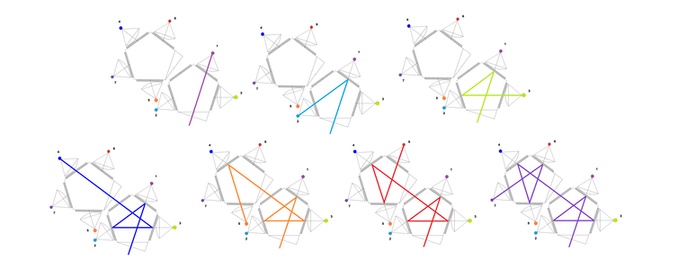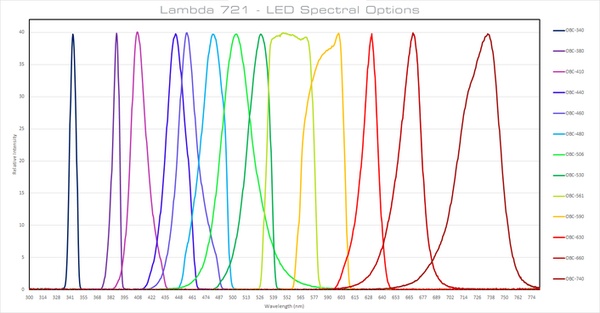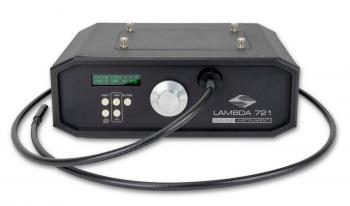Optical Beam Combining System Lambda 721
The Sutter Lambda 721 optical beam combining system allows you to combine beams from 7 or less independent LEDs installed in any sequence.
- Overview
- Specifications
- Links
A novel idea called the Lambda 721 combines up to 7 individual LED cubes with various spectra into a single common output beam. The LED, collimating optics, and a filter are all included in the LED cubes. These LED cubes are simple to install and exchange without the use of any tools. Before entering the optical channel through the bandpass filter, each LED cube is collimated. Each LED cube's filters also serve as mirrors, reflecting the collimated beams from the earlier light sources. The optical routes for each point, including the reflections that take place, are shown in the picture below:

Optical path for each light source position from 0 through 7
Originally, a dichroic ladder was used to combine more than two light sources. If the wavelengths of the various light sources do not overlap, dichroic mirrors, which change from transmission to reflection at a certain point in the spectrum, enable the merging of different light sources. This method's drawback is that light sources are difficult to switch. In order to prevent the light from being obstructed by the next dichroic in line, dichroic ladders also necessitate particular attention to the order in which the light sources are introduced into the optical path. To choose the desired range of wavelengths for each light source, additional bandpass filters must often be placed before the dichroic. The ladder's overall light output diminishes with each filter and dichroic employed in it.
FEATURES
- The light source's spectrum output is easily adjustable.
- Without regard to the order, each LED cube can be positioned in any of the seven spots.
- Choosing a wavelength and reflecting a beam using Semrock® STR Filters
COMMON APPLICATIONS
- Fluorescent microscopy
- Calcium imaging
- FURA
- Optogenetics
- High speed wavelength selection
The Lambda 721 was built with a compact beam combiner and an efficient, condensed optical path in mind. The STR from Semrock and other thin-film bandpass filters reflect more than 90% of out-of-band light. It is possible to employ the filters for both light attenuation and reflection from the other sources if the band passes of the individual light sources do not overlap. Sitter was able to incorporate seven light sources in a small design with fewer losses than was previously possible by organizing the filters and sources into a double pentagon. Also, since no other input reflects from the last place in the optical train, there is no need for a filter there. This position allows the stimulation of multiple channels of fluorescence from a single LED and can be utilized with LEDs that have a broad spectrum output, such the 561nm LED. (On request, raw spectra are provided)
Notes:
- Without being reflected, light from position #1 travels straight to the device output. The source with the highest desired output may choose to be in this position.
- The filter for the seventh light source could be utilized with LED cubes that have wider outputs because it is not employed as a reflective surface.
- To provide the highest light output in setups with less than 7 light sources, sources should be filled from the lowest to the highest number of reflections.
- Each filter is placed with a collimated LED cube beam at an angle of incidence of 18 degrees. The band pass will somewhat shift in favor of shorter wavelengths as a result. While a coating tailored for this purpose would be preferable, stock -STR filters can be utilized if the band pass shift is taken into account while choosing the filters.
- The Lambda optical beam combiner is made to be adaptable and scalable. A straightforward setup modification and even some extra filters can result in a completely different output if your illumination requirements alter over time.

Lambda 721 - LED Spectra Options
You can also visit site of the manufacturer.



